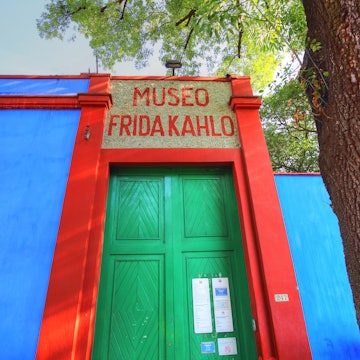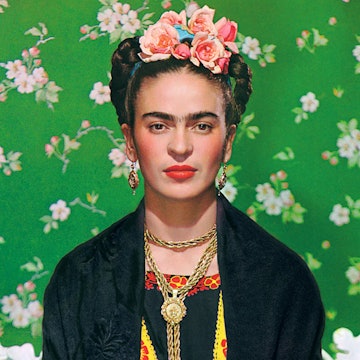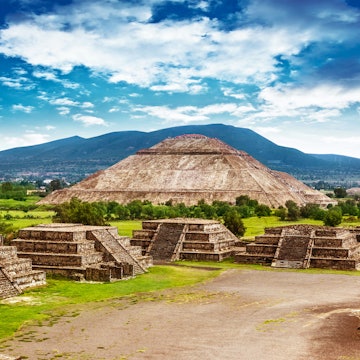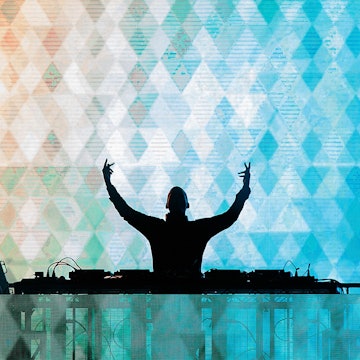

Mexico City is fast becoming one of the world’s great capitals. Contrary to its reputation for being dirty, crowded and dangerous, this city has a rich history, an impressive art scene, a dynamic street culture and some of the best food in Latin America.

Stats
Population: around 21 million
Visitors per year: around 12 million
Language: Spanish
Daily budget: US$30-200
Best time of year to go: October–May are the best months to visit. It can be chilly in December and January but you’ll enjoy blue skies and sunny days. From March/April the temperatures heat up, and in June the rains start to fall, continuing until October.
Number of museums: 150+ (Personal favorite? Museo Casa de León Trotsky, the Leon Trotsky museum)
Otherwise known as: El Distrito Federal, or simply DF (day-effay).
Essential phrases: hola (hello); adios (goodbye); ¿qué onda? (how's it going?)
Neighborhoods & sights
Centro Histórico
The historic heart of Mexico City was where the Aztecs founded their capital Tenochtitlan in 1325. When the Spaniards arrived they used this site as the building blocks (literally) of what is now modern Mexico City. At the center is the vast Plaza de la Constitución, otherwise known as El Zócalo. Visit in September to hear the Grito de Dolores, a commemoration of the shout that marked Mexican independence, delivered today by the ruling president. Explore the grandiose Catedral Metropolitana before walking over to the Templo Mayor, a large Aztec temple complex that was only discovered in the 1970s. Six blocks west of the Zócalo, the Torre Latinoamericana stands 183m high, offering a bird’s eye view of the urban sprawl from its 44th floor.
Coyoacán

Characterized by cobblestone streets and Franciscan churches, the southern neighborhood of Coyoacán is where you’ll find Frida Kahlo’s La Casa Azul (the Blue House), where she was born and raised. Much of the home remains as it was in the 1950s and works by Kahlo and her husband Diego Rivera are on display. Arrive early to beat the crowds. A couple of streets over is the Museo Casa de León Trotsky, a walled compound where the Soviet exile lived. Visit the spartan home where he spent the last year of his life, including the study where he met his grizzly end with an ice axe.
San Ángel
This pretty neighborhood in the southwest of the city was once the postcode of choice for the capital’s wealthiest residents. Today, with its colorful colonial mansions and sculptured gardens, it still retains an exclusive feel. Come on a Saturday for the popular market, El Bazar Sábado, that’s been staged weekly since the 1960s. Held in a historic building on Plaza de San Jacinto it’s one of the best craft markets in town. Shopping done, head to nearby San Ángel Inn for lunch.
Xochilmilco
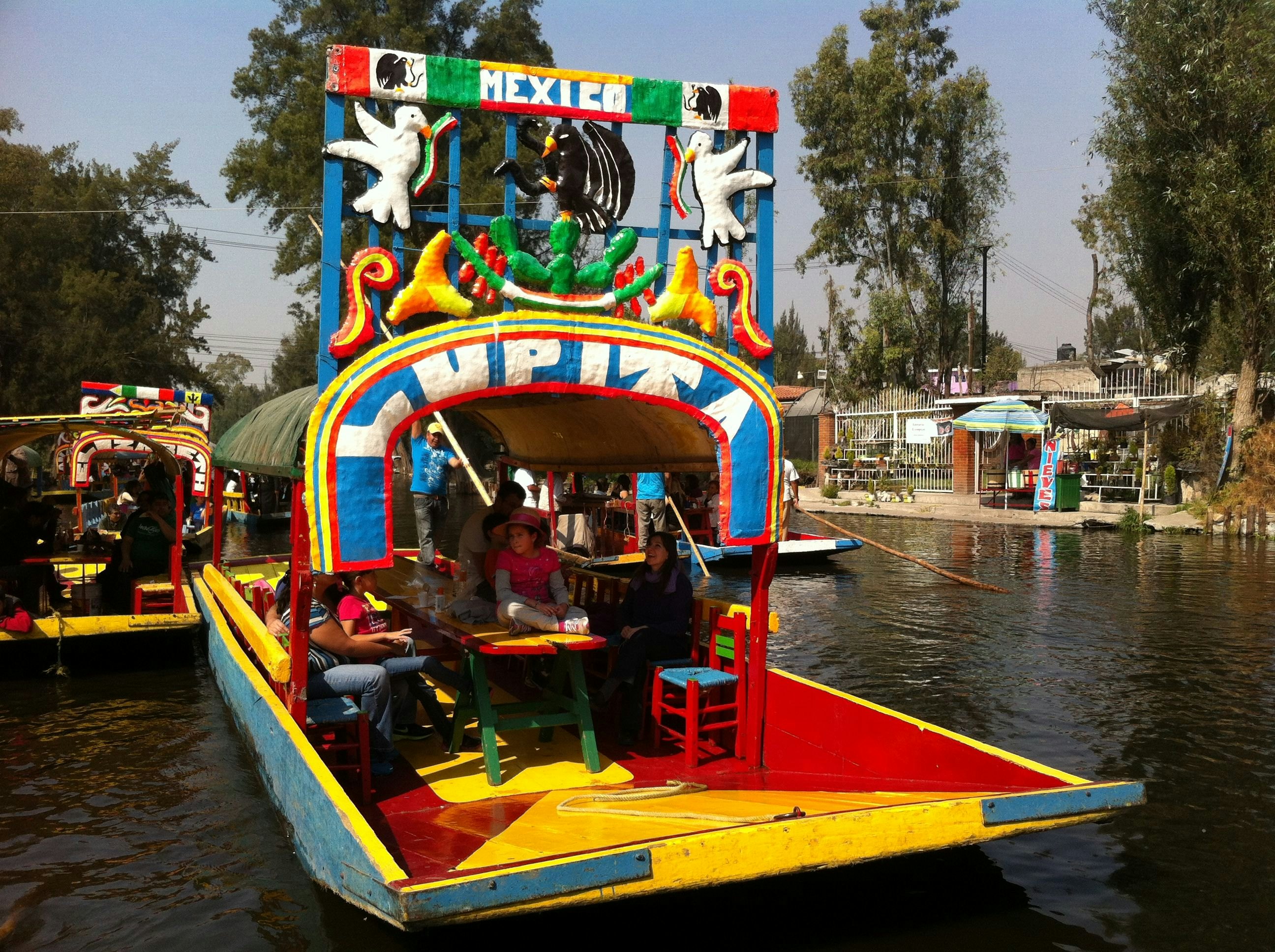
Floating along Xochimilco’s (so-chee-meel-koh) network of canals is a popular activity for visitors. Originally a lake with an extensive canal system and causeway to Tenochtitlan, Xochimilco is today most famous for its brightly painted trajineras (gondola-like boats) and artificial islands called chinampas. Join the weekend masses and cruise along the waterways past floating mariachi bands, paddling photographers and taco sellers hawking their freshly made goods from wooden canoes.
Bosque de Chapultepec
When locals need a dose of nature they head to Chapultepec Park, 1695 acres of green space in the heart of the capital and often referred to as Mexico City’s 'lungs'. It’s divided into three sections with museums, amusement parks, monuments, a zoo, boating lake and more. Head first to section one and Chapultepec Castle, once the official residence for Mexican heads of state and now a very good history museum.
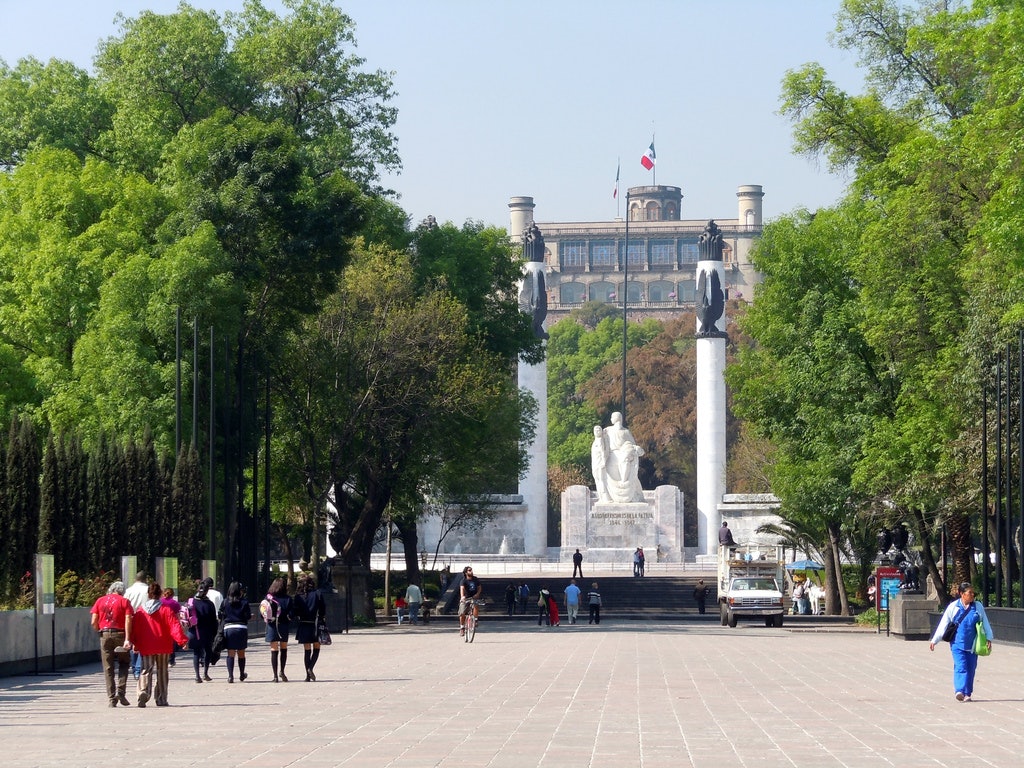
Condesa & La Roma
DF’s coolest neighborhoods are home to faded Art Deco houses, award-winning restaurants, late-night mezcalerías and seemingly the capital’s entire dog population. These neighboring colonias feel more like a village than a subdivision of one of the world’s biggest cities. Grab a coffee and freshly made pastry from the Panaderia Rosetta or a drink at Condesa DF and watch the resident hipsters ride the tree-lined streets on their bicycles.
Teotihuacan

Located some 50km northeast of Mexico City is the incredible Teotihuacan, meaning 'the place where the gods were created'. Although its exact origins are unknown, it’s thought that construction began around 100 BC, more than 1000 years before the Aztecs arrived in central Mexico. The size of the monuments, which were all built by hand, is mind-boggling. Particularly impressive are the Temple of Quetzalcoatl and the Pyramids of the Moon and the Sun. Don’t look down when climbing to the top.
What to pack
Layers The mornings and evenings can be cool but temperatures rise throughout the day.
Rain jacket A good waterproof and/or an umbrella is essential if visiting during the rainy (summer) months.
Sunscreen & sunglasses The sun is strong at 2200m above sea level.
Getting around
Use only authorized taxis (taxi autorizado) when travelling from the airport into town. These can be booked at one of the official airport taxi booths.
You can catch the metro into the center from the airport but if you have large pieces of luggage you may not be allowed on the train.
To get a feel for the city, first timers should jump on the Turibus, an open-topped double-decker hop-on-hop-off bus that runs loops of the city. The ‘Centro Histórico’ tour is the best.
Many of the capital’s neighborhoods are surprisingly walkable. For longer distances the metro is a good option providing you avoid rush hour. Taxis are plentiful and inexpensive. Make sure to always use an official sitio (radio) taxi; do not hail one on the street.
Safety
Despite violence in other parts of the country, the capital remains relatively safe. You should, however, avoid wearing showy jewelry or watches and carrying expensive-looking bags or camera equipment.
Mexico City is built on shaky ground. If you’re in town when an earthquake hits, try to keep away from buildings or items that could come loose. If caught inside a building, follow the locals and find shelter at the building’s strongest point.
Etiquette
Dress Chilangos are dedicated followers of fashion, with styles that vary considerably from neighborhood to neighborhood, but you can forget following the crowds and wear what you would for visiting an American or European city instead. Keep flip-flops and board shorts for the beach.
Tipping Expect to tip for nearly everything. In restaurants, 10-15% of the total bill is considered the norm.
Booking ahead
Restaurants can usually be booked several days in advance; for particularly popular places it’s worth reserving a couple of weeks ahead.
Katja Gaskell is a travel writer based in Mexico City. She is the author of Lonely Planet guides to Australia, China and India and the co-founder of globetotting.com, a website for adventurous family travel. She’s also partial to a taco or two. Say hello @katjagaskell










